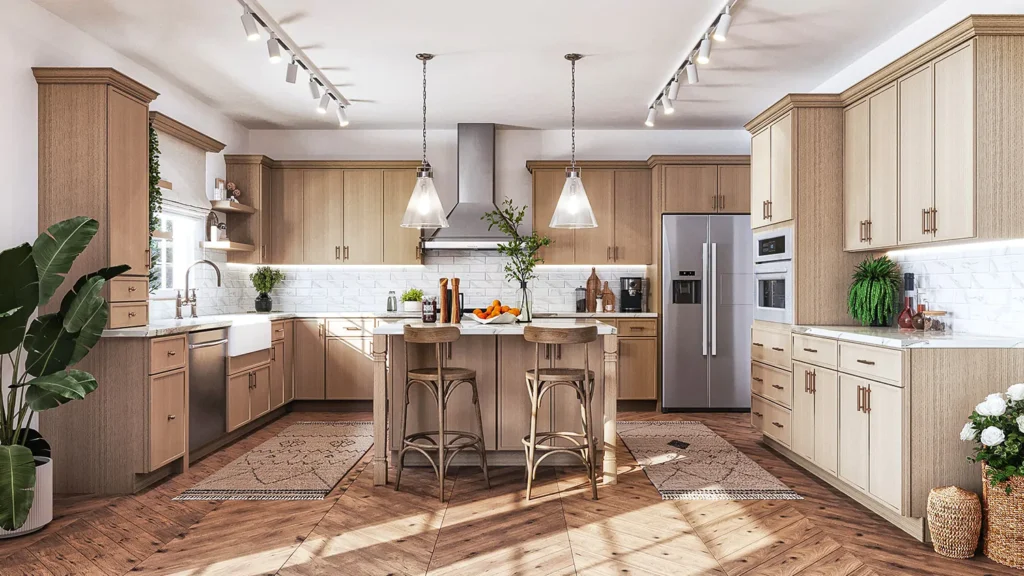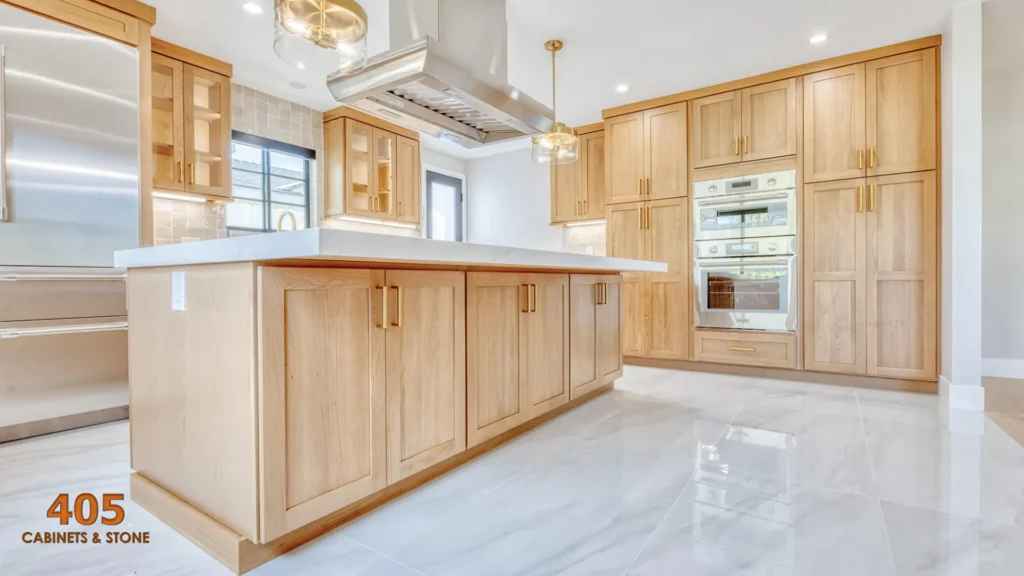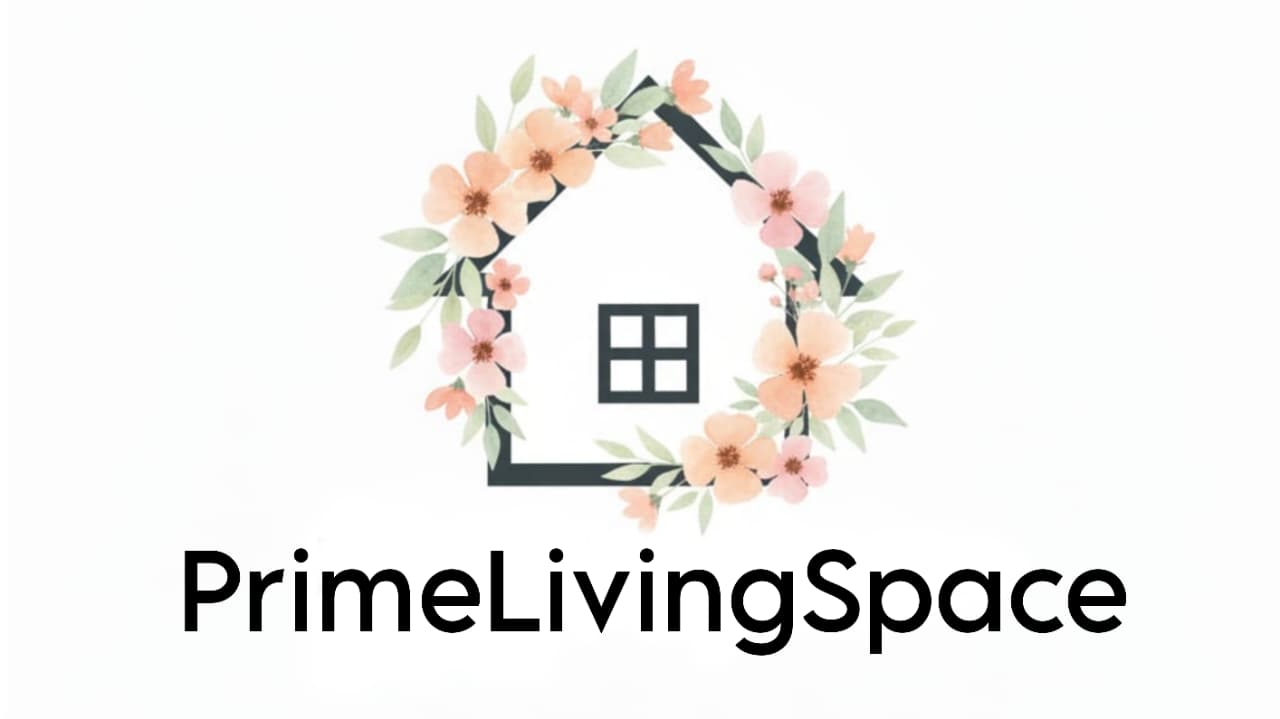
Real homeowners share how White Oak Kitchen Cabinets transformed their spaces. Honest insights, styles & tips you’ll want to steal.
Why Everyone’s Talking About White Oak Kitchen Cabinets
You know that feeling when you walk into a space and it just feels right? Cozy, calm, effortlessly pulled together. Chances are, White Oak Kitchen Cabinets had something to do with it.
These beauties are everywhere in 2025—and not just because designers love them. They bring warmth, character, and that subtle luxury vibe people are after these days. If you’ve been eyeing those clean, airy kitchens on Pinterest, there’s a good chance white oak is the secret sauce.
This guide breaks down what makes these cabinets so appealing, how they hold up in real homes, and what to know before you commit.
1. What Makes White Oak Kitchen Cabinets So Special?
Natural Beauty That Just Works
White oak has a soft golden tone and straight grain that makes it look warm, grounded, and totally timeless. Whether your vibe is clean and modern or a little more rustic and lived-in, this wood somehow fits right in.
I’ve seen white oak used in both a sleek loft downtown and a cozy farmhouse in the country. It worked beautifully in both. That’s the magic.
They’re Tough as Nails (But Better Looking)
Let’s be real—kitchens take a beating. Spills, knocks, sticky fingers… it all happens here. White oak doesn’t flinch. It’s a dense, durable hardwood that can handle real life.
Unlike softer woods like pine (which can dent if you look at it sideways), white oak holds up. And it ages gracefully, developing a patina that just adds to its charm.
2. Real Reviews from Real Homes
“It Opened Up My Tiny Kitchen” – Jenna, NY
Jenna swapped outdated cabinets for white oak and black hardware in her NYC apartment. “The space just breathed,” she said. “It felt brighter, bigger—even though nothing changed but the cabinets.”
“Perfect for Our Messy Family” – Carlos, TX
Carlos has three kids, two dogs, and zero regrets. “White oak hides fingerprints way better than painted cabinets,” he told us. “And it doesn’t feel too precious, which is important when your toddler thinks the kitchen island is a jungle gym.”
“I’ll Never Get Tired of Them” – Priya, CA
Priya invested in custom white oak cabinetry during her forever home reno. “I didn’t want a trend—I wanted something I’d love for years. White oak is warm, elegant, and doesn’t scream for attention. It’s just right.”
3. Styles of White Oak Kitchen Cabinets We’re Loving

RTA vs. Custom Cabinets: What’s Right for You?
- RTA (Ready to Assemble): Great for budget makeovers. These are more affordable and still look great, especially if you choose a high-quality finish.
- Custom White Oak Kitchen Cabinets: These are for when you want everything dialed in—perfect dimensions, custom stains, the works.
If you’ve got an oddly shaped space or a specific vision, go custom. Otherwise, RTA is a smart move.
Finishes: Natural, Stained, or Bleached?
- Natural: Clean and warm. Perfect if you want to show off the wood’s character.
- Stained: A bit richer in tone—think espresso or honey hues—but still lets the grain shine.
- Bleached or Whitewashed: Breezy and coastal. Great for minimalist or beach-inspired spaces.
Pair It with Open Shelving
Floating shelves in matching white oak? Chef’s kiss. It lightens the room and makes the kitchen feel open and airy.
4. How White Oak Stacks Up Against Other Woods
White Oak vs. Red Oak
- Red oak has a more obvious grain and warmer tone.
- White oak is smoother and feels a little more high-end.
- Plus, white oak is slightly more water-resistant—big win for kitchens.
White Oak vs. Maple or Birch
- Maple is smooth but doesn’t have the same visual warmth.
- Birch is cheaper but dents easily and lacks character.
- Verdict? White oak brings beauty and toughness in one solid package.
5. Pricing, Installation & Upkeep
What You’ll Spend in 2025
Expect to pay $150 to $650 per linear foot. That includes everything from off-the-shelf options to fully custom cabinetry. Just be sure to factor in hardware, finishes, and installation costs.
What the Pros Say
- Measure carefully—twice.
- Don’t forget the trim and filler panels.
- Got an island or funky angles? Hire a pro installer.
Caring for Your Cabinets
White oak doesn’t demand much:
- Wipe with a damp cloth and mild soap
- Avoid harsh chemicals
- If you go with a natural oil finish, reapply every couple of years for that fresh look
6. Where to Buy White Oak Kitchen Cabinets
Some Great Places to Start
- Home Depot – Easy access, decent quality
- Cabinets.com – Solid mid-range to custom options
- Local Craftsmen – Pricier, but you get a truly one-of-a-kind piece
Signs of Quality
- Soft-close drawers
- Solid wood (not particle board)
- Clean, consistent grain
7. Design Tips: How to Style White Oak Cabinets
Color Pairings That Just Work
- Navy blue or deep green for the island? Stunning.
- Brass or matte black hardware? Instant upgrade.
- Light quartz or marble countertops? Classic and clean.
Backsplash & Counter Combos
- White subway tile = always a win
- Marble with gray veining adds elegance
- Concrete countertops give it an edge
Floors & Lighting That Elevate
- Wide-plank floors in neutral tones
- Oversized pendants in black or gold
- Add a cozy runner for warmth underfoot
Conclusion: Should You Go for White Oak Kitchen Cabinets?
If you’re after something timeless, versatile, and seriously gorgeous—White Oak Kitchen Cabinets are a no-brainer.
They don’t chase trends. They elevate spaces quietly but powerfully. Whether you’re flipping a fixer-upper or designing your dream kitchen, they’ll grow with you.
Honestly, they’re like the little black dress of cabinetry—simple, classic, and somehow always exactly what the space needed.
FAQs
Q: Are white oak kitchen cabinets trendy or timeless?
A: Both. They’re hot right now, but not in a fleeting way. These are cabinets you’ll still love in 10 years.
Q: Can white oak work in a small kitchen?
Absolutely. Its light tone makes smaller spaces feel bigger and brighter.
Q: Do they take a lot of upkeep?
Not really. A quick wipe and occasional oiling (if you skip a protective finish) will keep them looking fresh.
Q: Are they worth the price?
If you’re in it for the long haul—yes. Their durability and style make them a solid investment.
Q: Where’s the best place to buy them?
Depends on your budget and needs. Big box stores for convenience, online sites for variety, and local makers for custom craftsmanship.
Related Posts:
Transform Your Space with a Traditional Chinese Kitchen Design
Is Cevurı the Next Big Thing in Mediterranean Cuisine—Or Just a Delicious Mystery?



